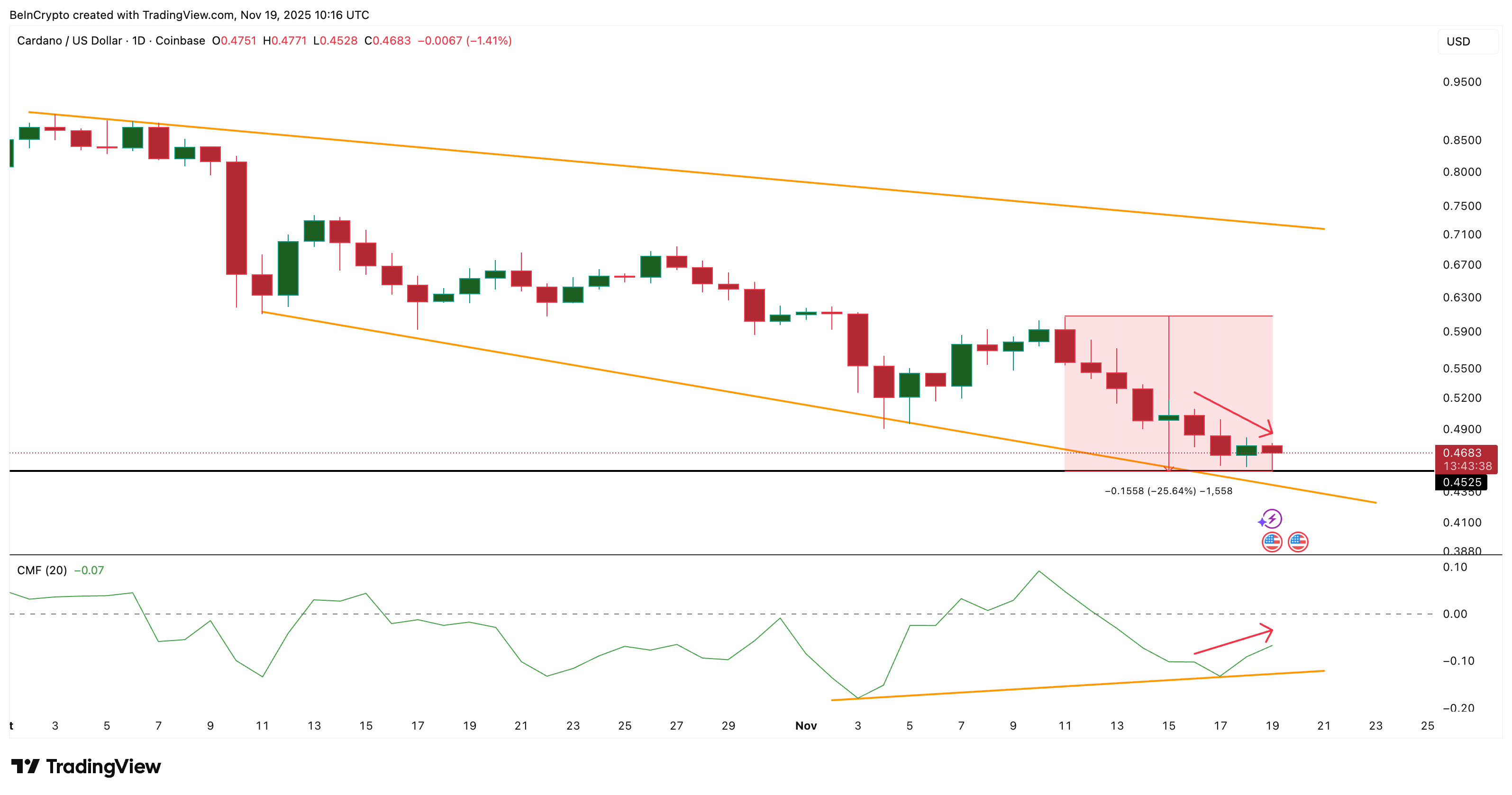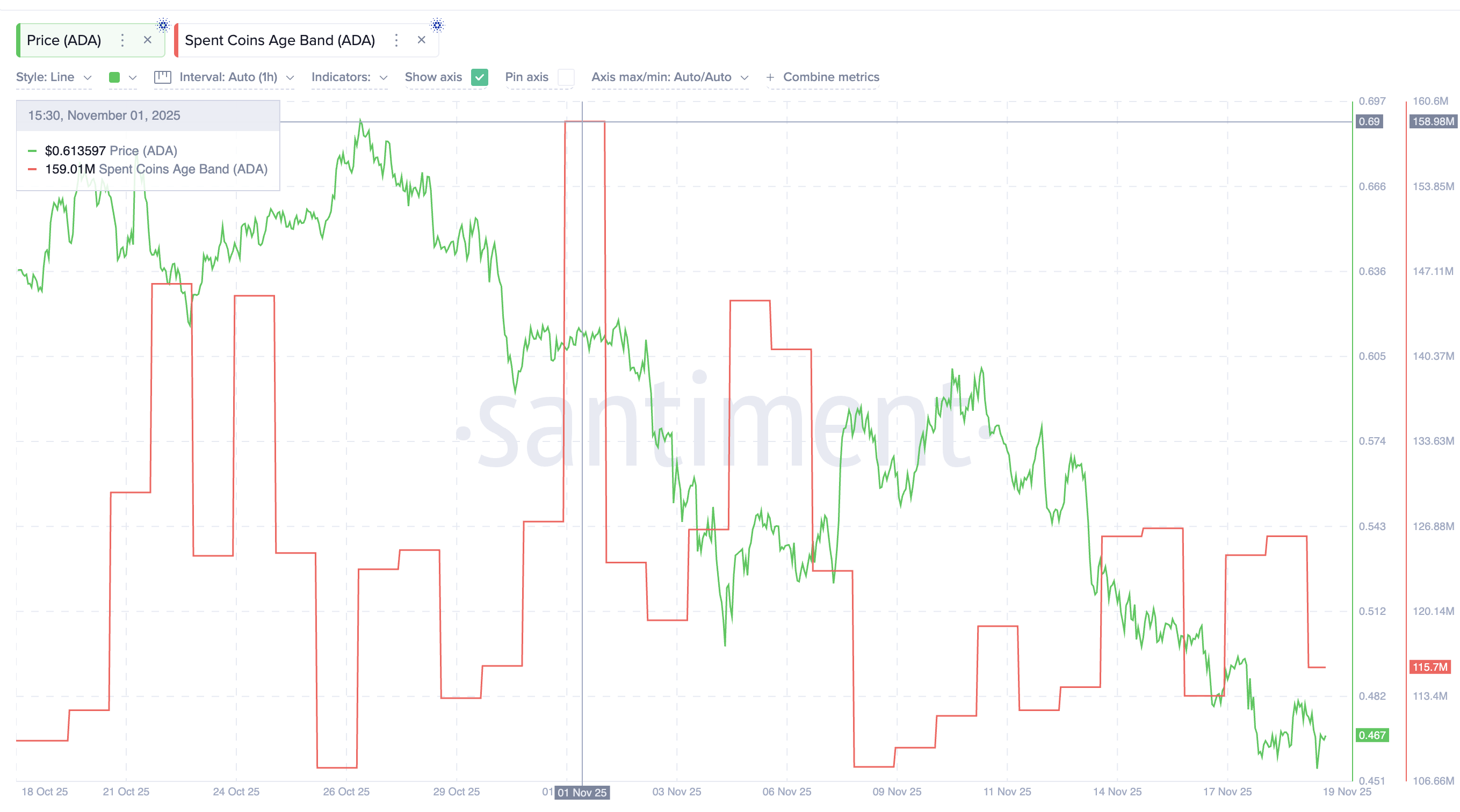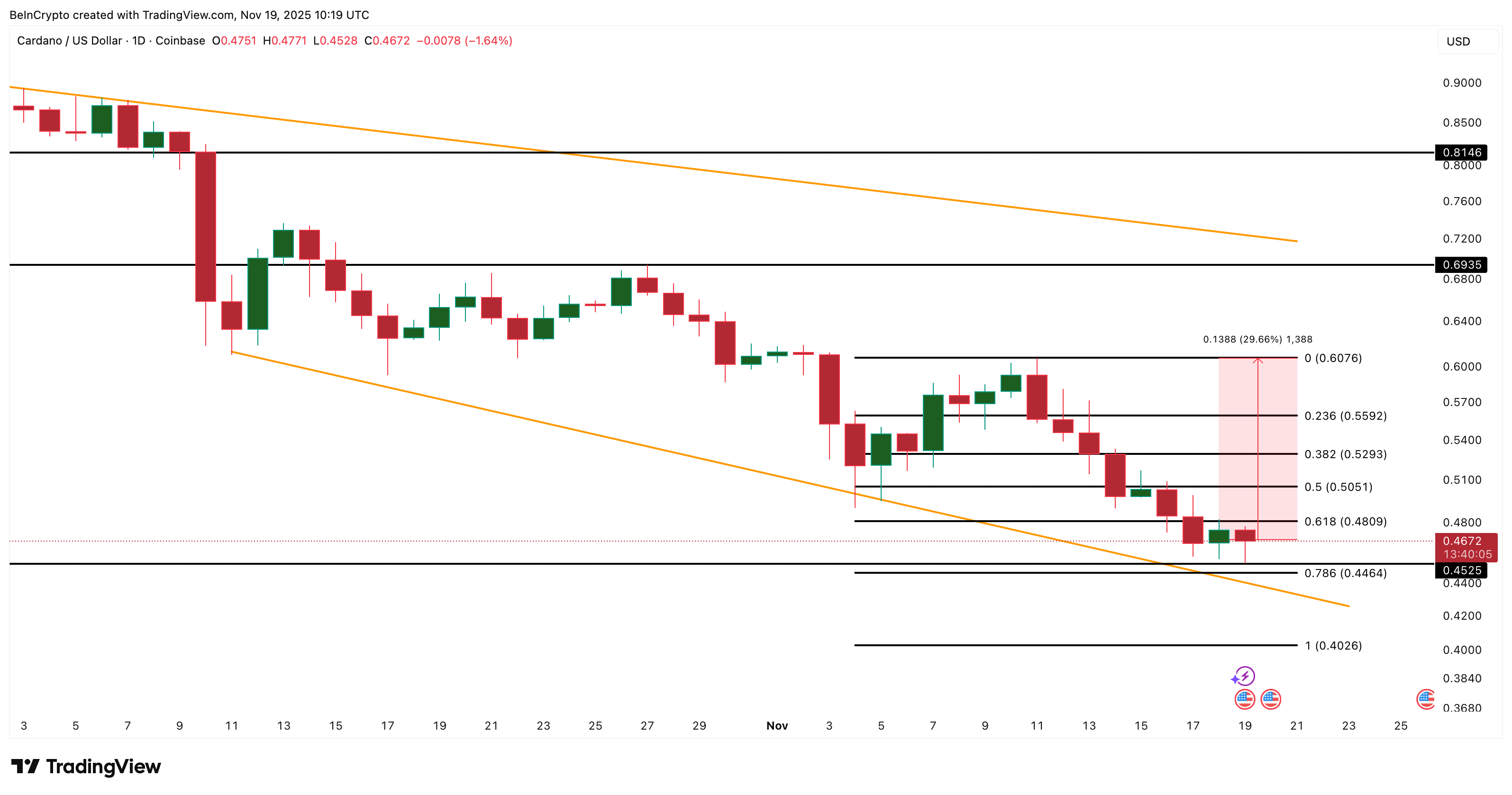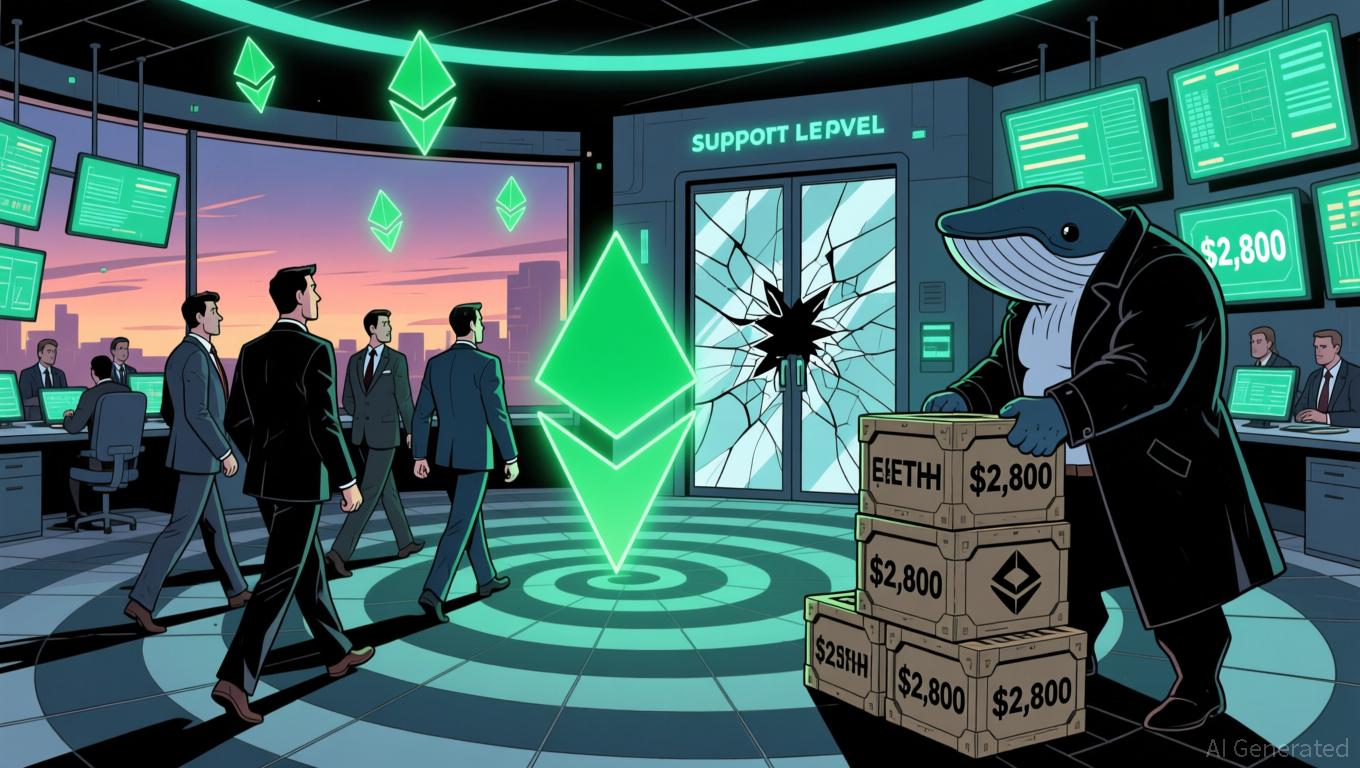3 Reasons Why A Cardano Price Rebound Looks Likely
Cardano has been one of the weakest large-cap coins this month. The Cardano price has dropped almost 30% over the past 30 days and nearly 26% since November 11. This drop pushed ADA toward the lower support of its falling wedge, a structure that usually leans bullish but can turn long-term bearish if broken.
Even with this pressure, three important indicators have turned positive just as Cardano sits on its last major support.
Early Signs of Buyer Strength Near Last Support
Two indicators that track buying strength and volume behavior have shifted at the same time, right as the Cardano price reached the critical $0.45 support.
The CMF (Chaikin Money Flow) tracks whether money is flowing in or out based on price and volume. It had been falling since November 10 and even dropped under zero during Cardano’s sharp correction. But from November 16 to November 19, CMF formed a higher high while the price made a lower high. This is a bullish divergence because CMF rising while price weakens shows stronger inflows than the chart reflects.

On-Balance Volume is a simple way to see if buyers or sellers have been more active. OBV had been stuck under a downward trend line for weeks, matching the steady decline in Cardano price. But as ADA touched the $0.45 zone, OBV pushed above this trend line for the first time in a while. This usually shows buyers starting to participate again before the ADA price reacts.

When CMF and OBV improve together near a major support, it often means the market may be preparing for a short-term recovery attempt. But the Cardano price still needs validation from its on-chain behavior.
Holder Behavior Shows Strong Conviction During the Drop
The Spent Coins Age Band tracks how many tokens from different wallet age groups are being moved. When many coins move at once, it often signals fear or heavy selling. When token movement drops while prices fall, it usually shows conviction from long-term holders.
On November 1, ADA saw its spent coins activity peak with the movement of 159.01 million tokens. By November 19, the metric had dropped by roughly 27%, even though the price kept falling.

This means far fewer tokens moved during the correction. When token movement drops this sharply during a sell-off, it strengthens the idea that Cardano may be trying to save its trendline support rather than break below it. That’s the third reason pushing for the rebound angle.
Cardano Price Must Hold $0.45 or Risk a Breakdown
Cardano price is trading directly on the lower trend line of its falling wedge and its strongest support at $0.45–$0.44. If this zone holds on a daily close, ADA can attempt a rebound. Moving above $0.50–$0.52 would be the first sign of strength, but the real recovery begins only after Cardano retakes $0.60.
That level flips the short-term trend and sets up a retest of $0.69, which is the point where a full wedge breakout becomes possible. Crossing that level would mean that the Cardano price could turn its supposed rebound into a rally attempt.

If the support fails, the structure breaks. A daily close under $0.44 opens a drop toward $0.40, with the possibility of deeper dips if market sentiment weakens further. The bullish setup becomes invalid below this zone.
Disclaimer: The content of this article solely reflects the author's opinion and does not represent the platform in any capacity. This article is not intended to serve as a reference for making investment decisions.
You may also like
Bitcoin Updates: Federal Reserve's Softer Stance and ETF Investments Drive Bitcoin's Recovery to $91,000
- Bitcoin surged above $91,000 in December 2025 as Fed rate-cut odds hit 70%, driven by dovish signals and ETF inflows reversing outflows. - Technical indicators showed oversold RSI levels and seller exhaustion, while altcoins like XRP/ZEC jumped 7.7%-17% amid $2.95T market cap growth. - Institutional flows favored Solana ETFs and altcoin products, but MSCI's crypto exclusion policy sparked backlash from advocates like Michael Saylor. - Retail fear metrics and $605M liquidations highlighted fragility, yet

Ethereum Updates Today: Institutional Investments Rise While Prices Remain Flat: The Challenge of Ethereum's Potential Breakout
- Ethereum's MVRV Z-Score (0.29) signals potential buying opportunities amid prolonged accumulation and institutional ETF inflows. - Retail investors reduced exposure while whales (10K+ ETH) accumulated, contrasting with $92M ETH ETF inflows on Nov 24. - BlackRock's staked ETH ETF filing threatens DATs' opaque fee models as ETH price struggles to reclaim $2,800 despite technical buildup. - Divergent ETF flows ($88M ETHA inflow vs. $53M outflow) highlight market volatility, with analysts eyeing $9K breakout

Stablecoins Solidify Their Position as the Foundation of Global Finance, Surpassing Conventional Powerhouses
- A 214M USDT transfer highlights stablecoins' growing role as global finance's backbone, surpassing traditional payment giants. - VCI Global's $50M OOB token accumulation underscores institutional confidence in Tether-aligned ecosystems for merchant adoption. - Tether's $180B USDT circulation and $12T+ 2023 volume reflect structural adoption in cross-border payments and settlements. - Stablecoin growth challenges traditional intermediaries while Oobit's platform incentivizes real-world commerce adoption t
Character.AI's Interactive Storytelling AI Seeks to Disrupt the Cycle of Teen Addiction
- Character.AI replaces open-ended chatbots with "Stories," a choose-your-own-adventure AI feature for teens to mitigate mental health risks and regulatory pressures. - The new feature restricts unrestricted AI conversations for under-18s, offering structured narratives with user-driven choices and visual storytelling. - Legal challenges and California's AI companion regulations intensify scrutiny, as critics warn of unresolved risks like parasocial addiction and emotional manipulation. - Mixed user reacti

